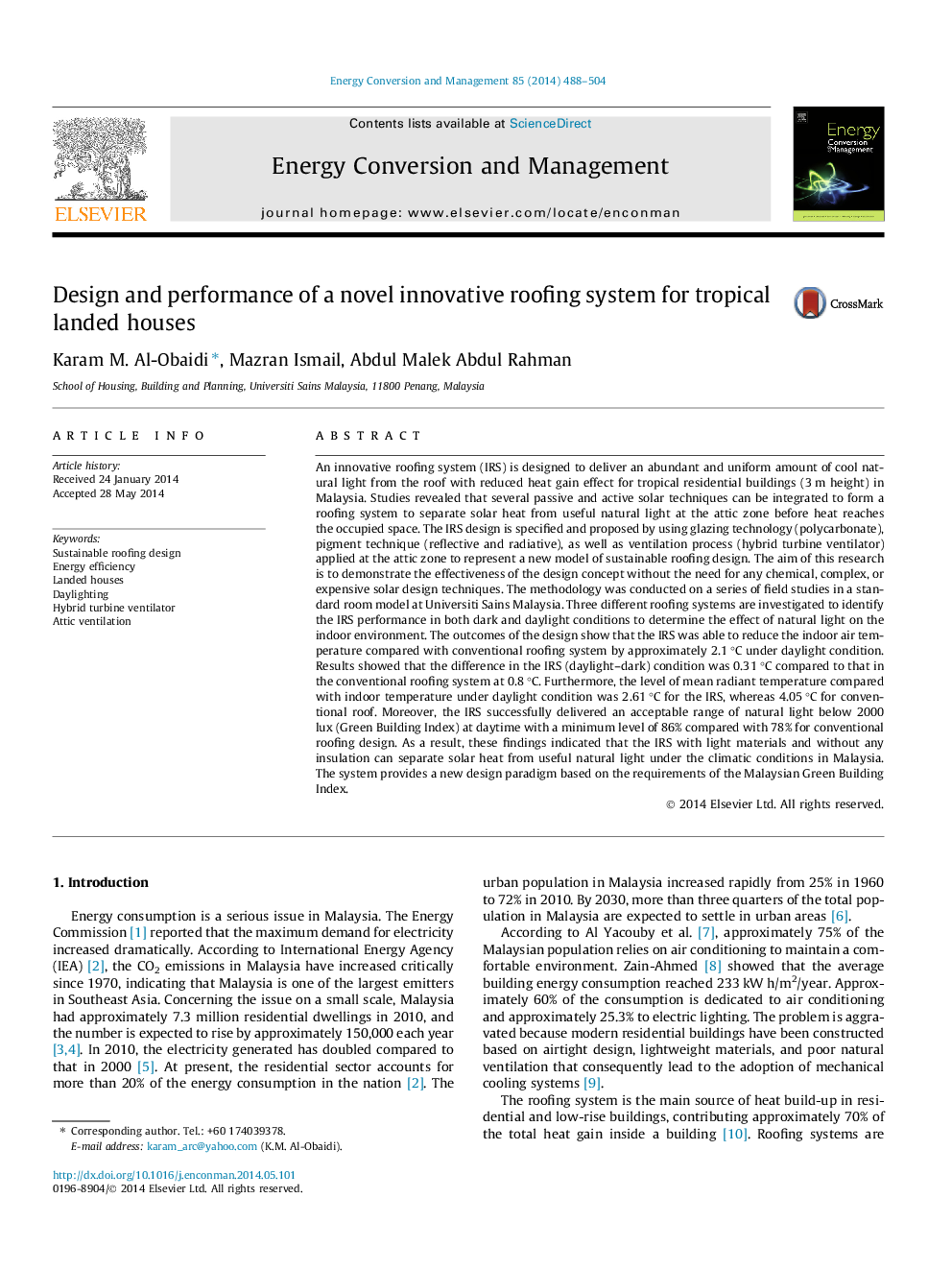| Article ID | Journal | Published Year | Pages | File Type |
|---|---|---|---|---|
| 7164777 | Energy Conversion and Management | 2014 | 17 Pages |
Abstract
An innovative roofing system (IRS) is designed to deliver an abundant and uniform amount of cool natural light from the roof with reduced heat gain effect for tropical residential buildings (3 m height) in Malaysia. Studies revealed that several passive and active solar techniques can be integrated to form a roofing system to separate solar heat from useful natural light at the attic zone before heat reaches the occupied space. The IRS design is specified and proposed by using glazing technology (polycarbonate), pigment technique (reflective and radiative), as well as ventilation process (hybrid turbine ventilator) applied at the attic zone to represent a new model of sustainable roofing design. The aim of this research is to demonstrate the effectiveness of the design concept without the need for any chemical, complex, or expensive solar design techniques. The methodology was conducted on a series of field studies in a standard room model at Universiti Sains Malaysia. Three different roofing systems are investigated to identify the IRS performance in both dark and daylight conditions to determine the effect of natural light on the indoor environment. The outcomes of the design show that the IRS was able to reduce the indoor air temperature compared with conventional roofing system by approximately 2.1 °C under daylight condition. Results showed that the difference in the IRS (daylight-dark) condition was 0.31 °C compared to that in the conventional roofing system at 0.8 °C. Furthermore, the level of mean radiant temperature compared with indoor temperature under daylight condition was 2.61 °C for the IRS, whereas 4.05 °C for conventional roof. Moreover, the IRS successfully delivered an acceptable range of natural light below 2000 lux (Green Building Index) at daytime with a minimum level of 86% compared with 78% for conventional roofing design. As a result, these findings indicated that the IRS with light materials and without any insulation can separate solar heat from useful natural light under the climatic conditions in Malaysia. The system provides a new design paradigm based on the requirements of the Malaysian Green Building Index.
Keywords
Related Topics
Physical Sciences and Engineering
Energy
Energy (General)
Authors
Karam M. Al-Obaidi, Mazran Ismail, Abdul Malek Abdul Rahman,
